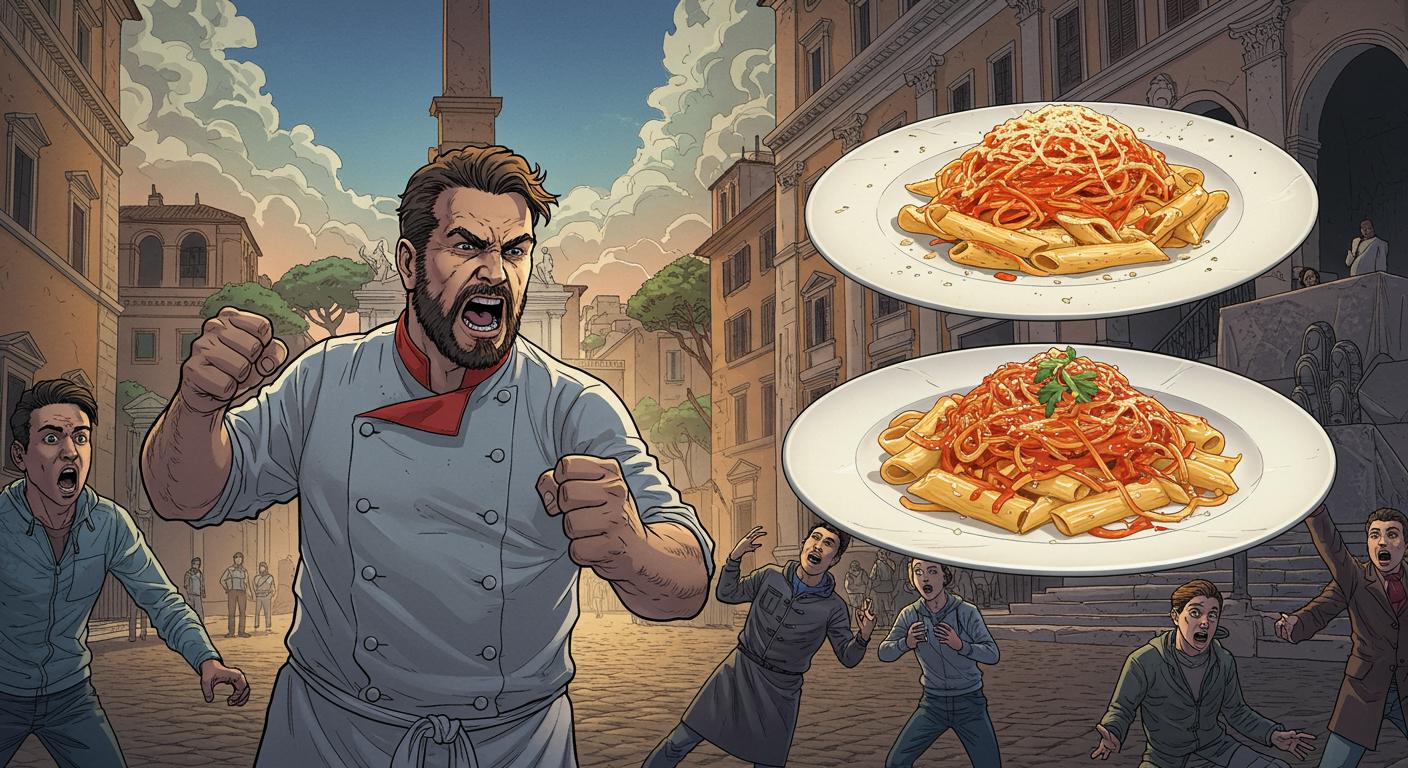There are few things on this planet that ignite as much passion as pasta. It unites families, divides dinner parties, and, as it turns out, has now managed to spark what some are tongue-in-cheek calling an “international incident.” This week, a humble cacio e pepe recipe published by the UK’s Good Food website found itself at the eye of a culinary storm, pitting the fast-and-loose approach of British lunch-making against the centuries-old traditions of Roman cuisine. If ever there was a global stage for a cheese-and-pepper pasta showdown, 2025 delivered.
How Many Ingredients Does Tradition Allow?
According to BBC News, the offending recipe on Good Food positioned cacio e pepe as a “speedy lunch” made up of “spaghetti, pepper, parmesan and butter.” Four little ingredients, infinite outrage. Italian restaurant association Fiepet Confesercenti didn’t mince words: they declared themselves “astonished” and sent actual letters—one step up from a Twitter thread—to both the new owners of Good Food and the UK ambassador in Rome. For context, that’s the culinary equivalent of requesting a formal inquiry into the misuse of oregano.
Claudio Pica, the group’s president, explained that, in their view, “There are not four ingredients, but three: pasta, pepper and pecorino.” The notion that butter and parmesan (let alone cream) could be involved was as shocking to Italian sensibilities as suggesting pizza is best with a dollop of ketchup. BBC News also highlights that public broadcaster RAI’s journalists didn’t hold back either, with one noting that Italians are perpetually judged against the high standards of the BBC—only to find themselves betrayed by its food site’s faux pas. The mere mention of adding cream, as the report recounts, was said to have prompted a goosebumps-inducing reaction.
“You Have to Yield to Caesar What Is Caesar’s”
For many Italians, this was never just about a recipe. BBC News documents how several local restaurateurs and chefs underscored the importance of respecting names and origins—a point emphasized by Maurizio, a fourth-generation owner of a central Rome hotel. He maintained that creativity is fine, but labeling a butter-filled imitation as cacio e pepe is misrepresenting the dish: “You cannot say it is cacio e pepe if you put butter, oil and cream in it. Then it becomes something else.”
Giorgio Eramo, owner of a pasta restaurant near Rome’s St. Peter’s square, drew a sharp line between permissible tweaks and outright sacrilege. In his assessment, “What Good Food published, with butter and parmesan, is called ‘pasta Alfredo.’ It’s another kind of pasta.” Interestingly, Giorgio admits to offering a lime-infused cacio e pepe at his own establishment, but considers that a gentle seasonal riff—a “small change,” not an affront to the soul of the dish.
Nicola, whose sandwich shop lies in the Vatican’s shadow, issued perhaps the most categorical of culinary commandments. As he sees it, “Cacio e pepe should not be made with cream; cream is for desserts. For heaven’s sake. Whoever uses cream does not know what cooking means.”
Why Does Pasta Stir Such Passions?
The team at Good Food appeared to embrace the uproar with a sense of humor: on Instagram, they posted a video featuring magazines editor Keith Kendrick dramatically exiting the office, box-in-arms, playing into the notion that the controversy truly had international consequences.
BBC News explored why emotions ran so high. Eleonora, an employee at a busy Roman café, reflected on the powerful connection Italians feel to their culinary traditions. In her words, “Our tradition is based on food. So if you touch the only thing that we have… that can make us feel a bit sad.” There’s a pattern here—pizza with pineapple, cappuccino after noon, carbonara with cream—these aren’t just food faux pas to many locals, but perceived threats to a core piece of cultural identity.
So, in an age of recipe mashups and global culinary remixing, do labels and ingredients still matter this much? Is the real issue about what lands in the pan, or about calling a dish by a name tied to centuries-old pride?
The Recipe for Disagreement
What’s most remarkable isn’t just the presence of butter or parmesan, but how potent a recipe title can be. Good Food’s four-ingredient version might make for a quick weekday meal, but presenting it as cacio e pepe crossed a line for many in Rome.
BBC News’s reporting illustrates that recipes can turn into cultural flashpoints—a humble bowl of pasta serving as a stand-in for much larger questions of identity and authenticity. The real dilemma may not be about the recipe’s exact composition, but about why, for so many, the original name carries such weight. Is there a way for the die-hard traditionalists and the experimenters to find common ground, or are the boundaries of authenticity destined to be fiercely defended—as resistant to change as a good, al dente spaghetti?
Oddly enough, in Rome itself, the answer to pasta purity seems to depend on whether you’re holding the lime or wielding the cream.







